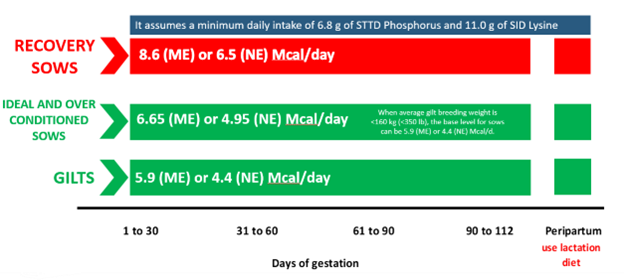This video will show you how to accurately update your existing calipers to the new PIC caliper ranges. This ensures the correct sticker placement and therefore the correct recommendation for feeding the sows in your barn.
Print Instructions – English
Print Instructions – Spanish
Please reach out to your PIC representative for materials to update your caliper.
Why is PIC updating sow body condition ranges?
PIC’s updated caliper sticker categories were developed from a new dataset to improve productivity, sow robustness and longevity. Recent findings indicate that due-to-farrow females with a caliper score of 13 and 14, based on the PIC caliper sticker have a similar risk of prolapse as underconditioned (Category 2) sows. This update aligns body condition targets with the latest knowledge on reproductive success and lifetime performance, reinforcing efforts to improve sow retention.
The updated sticker allows for more accurate body condition assessment and better identifies where feeding program adjustments are needed to reduce prolapse risk. The goal is to have less than 30% of sows score below 15 units (based on the original caliper scale) at due-to-farrow, or categories 1, 2, and 3a on the updated caliper sticker. This update will particularly benefit customers who are experiencing high prolapse incidence if they are using the categories previously defined by PIC.
The caliper remains an excellent tool for measuring body condition and implementing an intuitive female feeding program.
Several versions of calipers currently exist in the field. The calibration tool and new PIC target ranges will work on all versions.
- Risk: skinny condition
- Recovery (Red): under condition
- Wean Target (Green)
- Farrow Target (Green)
- Risk: over condition
These categories directly relate to the updated PIC feeding program guidelines.

Caliper use on gilts
PIC does not recommend using a caliper on gilts to determine feeding level. The first time PIC recommends using a caliper on a PIC female to set feeding levels is after she has weaned her first litter.
Measuring gilt body condition with a caliper at breeding can misread her as “fat.” As a result, feed might be cut during her first gestation, compromising future performance and longevity. However, using a caliper on gilts at farrowing can help monitor her body condition loss during the first lactation.
Feeding Recommendation Updates
PIC’s feeding program guidelines remain unchanged – they are simple to implement and tie directly to the category on the caliper.
- Sows that fall into the red “recovery” category (2) on the caliper should follow the red feeding recommendation below.
- Sows that fall into the green “wean target” or “farrow target” category (3a and 3b) or “over condition” category (4) should be fed the green feeding recommendation below.
- All gilts should be fed the green “gilt” feeding recommendation.
- Sows that fall into category 1 (skinny condition) require more intensive management strategies than just providing extra feed to recover. Visit with a PIC technical service team member to discuss what actions are best for your farm.




